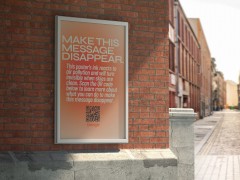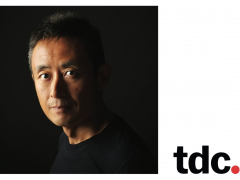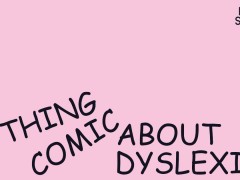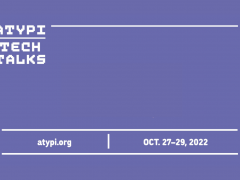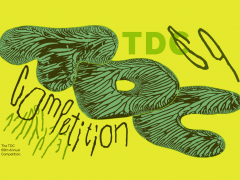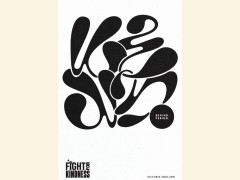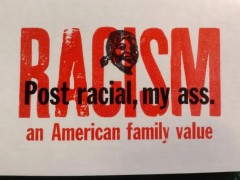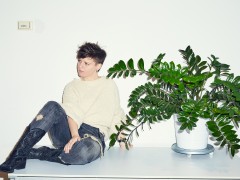Patta Psychogeographic Practice: Experimental Jetset on their typology of taped arrows that gives voice to a post-pandemic urban landscape
What are the streets telling us when we let them speak for themselves? Patta and Experimental Jetset present their latest collaboration aka a full capsule of unique designs that echo the values of psychogeography.
For the project Experimental Jetset overlaid classic Patta staples such as the Coaches Jackets, Hooded Sweaters, Graphic T-Shirts and Crewneck Sweaters with a psychogeographic spin that “harnesses the aesthetic of metropolitan maps and directional signage.”
“The idea of psychogeography is to defy the prescriptive directions leading you through a city, and instead drift, explore and wander in a more natural, free-flowing way. With this capsule collection, you can remind yourself that it's all about the journey, not the destination. Reject the autopilot routes you typically travel and explore based on impulse. This collaboration is about the apparel and where you take these styles. Right is left. Left is right. South is north. North is south” reads Patta’s statement about the capsule collection which is the latest installment in a series of projects rooted in the power of graphic design and type.
Typeroom reached out to the masterminds of this brand new urban language to learn more about yet another project that expands the Experimental Jetset visual code of conduct aptly titled Patta Psychogeographic Practice.
“Within the Situationist mindset, the city was meant to be treated as language – through a daily routine of aimless drifting (a method described as dérive), the urban environment was to be read, analyzed (and criticized) as text, as a piece of prose or poetry. In that sense, one could argue that the specific relationship between the city and the wanderer should be regarded as a dialogue, a discourse, a form of speech. Walking the city is like arguing with the streets, singing with the canals, conspiring with the traffic lights, and philosophizing with the neon signs. The city becomes a poem, a novel – with street names behaving as the titles of chapters, and graffiti functioning as scribbled footnotes in the margins” notes EJ.
“Simultaneously, the city can be regarded as a living archive – a library of hidden knowledge and popular information, of subcultural codes and political propaganda. The city is a memory battlefield, where mass media clashes with occult sign systems, where happenings of the past keep haunting the present, and where traces and marks appear on the walls like living organisms – a continuous broadcast in stone. In the same way that the streets behave as an infrastructure of language, the city functions as a patchwork of subcultures, movements, groups, and tendencies. To move through the city is to strategically circulate through a structuralist grid of mods, nozems, provos, punks, teds, rockers, skinheads, rude boys, beats, dreads.”
“Picking up sounds from open windows, car radios and boomboxes, the wanderer moves to the soundtrack of the city, stepping to the beat of electrified youth crazes, go-go mayhem, and doo-wop riots. Drifting through the city thus becomes a choreography – a continuous skank, a rhythmic twist-and-crawl, from street to street, from square to square. Tracing the hidden history of subcultural modernism (from Lettrism to the Situationist International, from Provo to Punk), one quickly notices that this diagrammatic family tree, this genealogical chart of movements and tendencies, resembles a true city map – and the only way to study this history is to walk. To drift is to study, to study is to drift.”
“We always like to conflate the notions of typography and typology – and in fact, throughout the PPP capsule collection, we have treated the typology of arrows as a typeface in its own right. It’s indeed an alphabet of arrows” Experimental Jetset told Typeroom. “In other words, the main font that we used throughout the PPP capsule collection has been an extensive typeface of arrows that we created ourselves. To be precise, it’s an alphabet of TAPED arrows – a motif referring both to the record sleeve of The Jam's ’This is the Modern World’ (1977), and to Guy Debord’s psychogeographic map of Paris, The Naked City (1957). This taped arrow is a motif we have been obsessed with for quite a while – already in 2010, we designed a t-shirt on which we recreated Paul Weller’s arrows.”
“Around that same time, we wrote a long essay in which we extensively discussed these arrows, projecting all kinds of meaning onto them. We published this essay as a sort of pamphlet, accompanying the shirt. In particular, we liked the idea of these arrows pointing forward and backward at the same time – both referring to the past and the future (which seemed apt for the mod movement, a genre both occupied by historicism and modernism). In our essay, we pointed out that these two directions (to the past and the future) are in fact closely related. To quote Régis Debray, from his wonderful essay ’Socialism and Print’ (2007): ‘The greatest modernizers inaugurate their career with a backward leap, and a renaissance proceeds through a return to the past, a recycling, and hence a revolution. [...] Behind the 're' of reformation, republic or revolution, there is a hand flicking through the pages of a book, from the end back to the beginning.’ Another important influence (on the development of the PPP capsule collection) was the pandemic and the way it manifested itself graphically in the city” noted EJ about the main inspirations behind this two-year in the making collection.
“We started working on the collection in 2020 – when the whole city seemed to be covered with impromptu directional arrows, taped to the pavement, regulating the stream of pedestrians. We were absolutely fascinated by that image – as if the Situationist collages suddenly came to live in the streets. It also reminded us of a sort of urban choreography. So those were our three main influences when it comes to the use of arrows in the PPP capsule collection: The Jam’s This is the Modern World (1977), Guy Debord’s, The Naked City (1957), and the graphic traces that the pandemic left in the city. Together, these influences resulted in collages like this one.”
“Either way, to make a long story short: to create this typology of arrows, we experimented with cut tape, with torn tape – putting together a large set of shapes… This typology of taped arrows is in fact the main typeface that we used within the PPP capsule collection. It’s the one typographic motif that holds the whole collection together” said the renowned creatives. But what exactly does the word ‘practice’ means within PPP?
“We take the word ‘practice’ quite seriously, and we feel that it is a keyword within the PPP acronym. We have been always very interested in movements such as the Situationists, the Lettrists, and notions such as psychogeography – but we also feel that a lot of the knowledge has been locked up in academic circles, gatekeeped by critics. It has become a theory, rather than a practice. So, within the context of the PPP capsule collection, we are stating that the Patta kids are the real successors to the Lettrists and the Situationists. After all, these kids are putting psychogeography into practice – walking the streets, reading the signs of the city, and becoming an integral part of the language of the city themselves” Experimental Jetset explained.
“Also, you shouldn’t forget that the name ‘Patta’ is in fact closely related to the practice of walking itself. The word ‘patta’ is Surinamese for shoe, related to the Portugese ’sapato’ – although some actually argue that the word is also related to the ancient Greek and Latin for ‘foot’ and ‘feet' (‘podos’, ‘pedes’, etc.). Either way, the word ‘Patta’ has strong (semiotic) links to the practice of walking – that’s why we came up with the walking PPP acronym, a stick figure with emphasized shoes. We liked the way in which these emphasized shoes almost look like Mickey Mouse feet – there’s something quite cartoonish about it …although our main inspiration for the walking PPP figure (especially in relation to the accompanying “Keep on Drifting” slogan) is still the famous ‘Keep on Trucking’ (1968) cartoon, by Robert Crumb. Either way, this walking PPP figure ended up on a lot of pieces as well – it’s literally a motif that’s drifting through the capsule collection” added the Amsterdam-based independent, graphic design studio founded in 1997.
With a simple mantra aka “turning language into objects” Experimental Jetset’s modern style focuses on printed matter and conceptual, site-specific installations. The studio’s portfolio is recognized globally and has been featured in exhibitions at world-renowned institutions.
The EJ x Patta collection consists of two T-shirts, a crewneck sweater, a hooded sweater, an umbrella, a coach jacket, a banner, a mixtape, and a pair of Converse All Stars and drops on Thursday, November 10th exclusively on patta.nl, on the Patta mobile app, and in Patta Chapter stores.
Tags/ typography, typeface, experimental jetset, apparel, patta, arrows, typology




.jpg)

